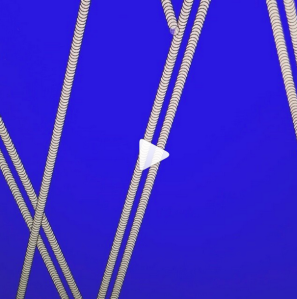Generative design is one of those terms which those who are not in the design industry probably don’t really quite understand. Even those who do work in the world of graphic design will often struggle to put into words what ‘generative design’ actually means.
Karin and Bertram Schmidt-Friderichs describe it as follows: “For the last several years generative design has created considerable excitement among insiders at media art festivals and conferences. Through the interplay of complex information with graphic design and programming, new and fascinating visual worlds are emerging where the coincidental is shaped to help correlations become visible.”
Now, some might say that this description in itself is pretty complex and confusing, but in easy to understand terms, generative design is about taking computer-generated patterns through algorithms and allowing them to self-perpetuate and grow. Essentially computer generated design, but with a human element. Some examples of these are Eno Henze’s ‘Red Ambush‘, which was programmed to look like human drawing but with a complexity that only a computer was capable of achieving, or Michael Schmitz’s ‘Evolving Logo‘, created for the Max Planck Institute. The logo changes on a daily basis, based on statistics and parameters fed into a Java programming platform (the logo ‘evolves’ based on the running success of the company – with figures on numbers of staff, funding and number of publications fed into the system on a daily basis).
During the week of 17 March, on the University of East London’s Masters of Arts programme, I began looking at how generative design could be used to create my own patterns. The results of specifically my experimentation were recorded and can be found at lecturer Lynsey Coke’s Instagram page here. A screenshot of this generative design can be seen below.
View video by clicking here.
This was created using an open source coding program called Processing (available free from http://www.processing.org). It was first launched back in 2001 but is now used by professionals and students the world over to promote the importance of visuality within technology and to ensure there is an element of computer and software literacy in the art and design industry. Simple coding is used to create patterns and 2D or 3D designs which, when it becomes more complex, can result in some incredible and detailed pieces of ‘generative design’. This is a slowly growing element of the visual arts but one which, given the influx of technology into every aspect of our lives, is only going to become bigger and more widely used in the future. For me, I can see it has some real advantages and possibilities to support the development of my project. Watch this space for more Processing over the next few months.
During this session we also thought more about generative design overall. Each member of the class had to bring in examples; some of mine are mentioned above. We thought through the process of generative design:
Rules (setting parameters, boundaries) ———-> Actions (code, algorithm, interaction) ————> Generative output
We also talked through how generative design can enable us to find new ways to see things and learn ways of visualising unseen data. Ever more innovative infographics being an example of this. Some more pictures from the class can be seen below:










